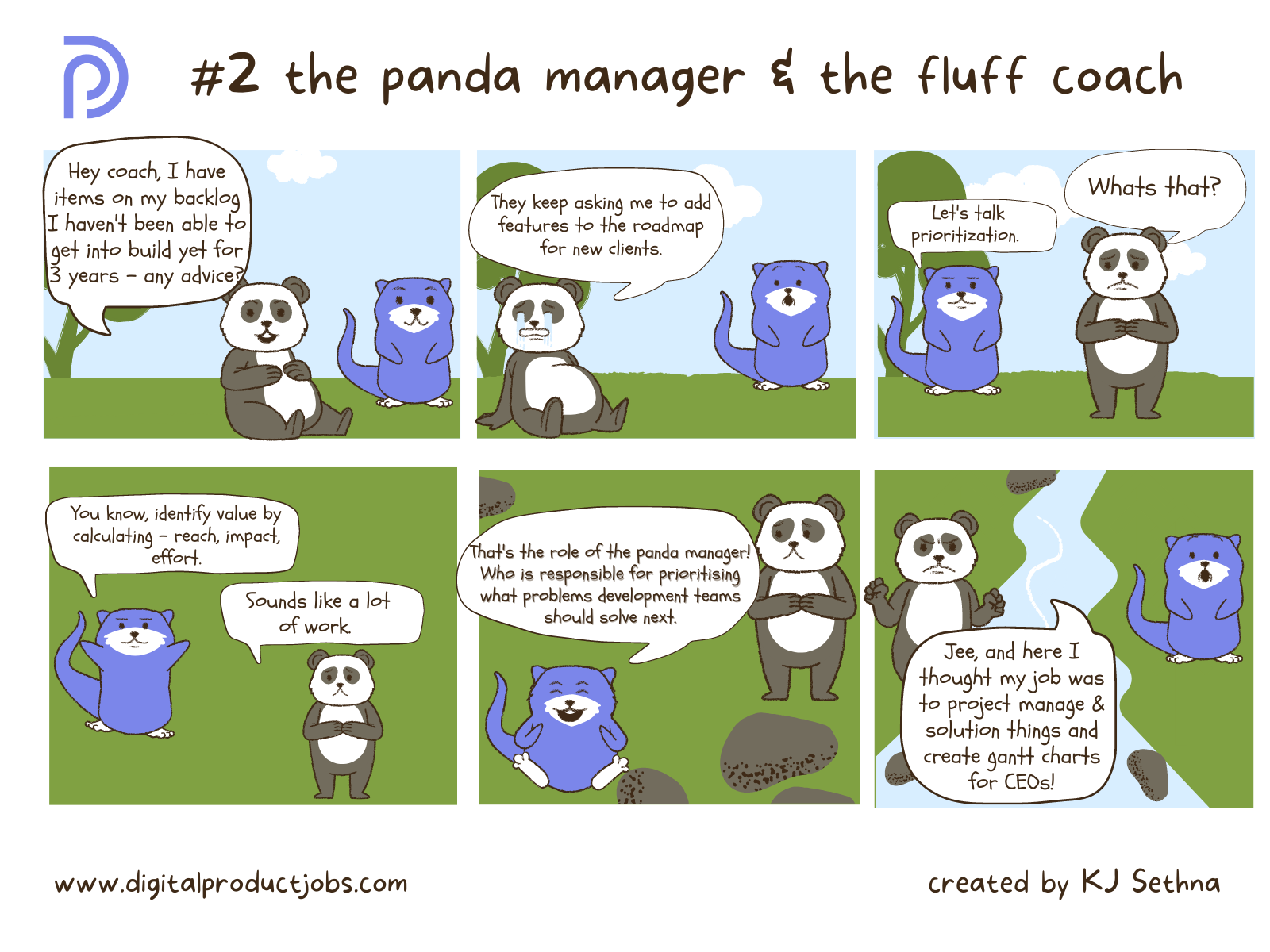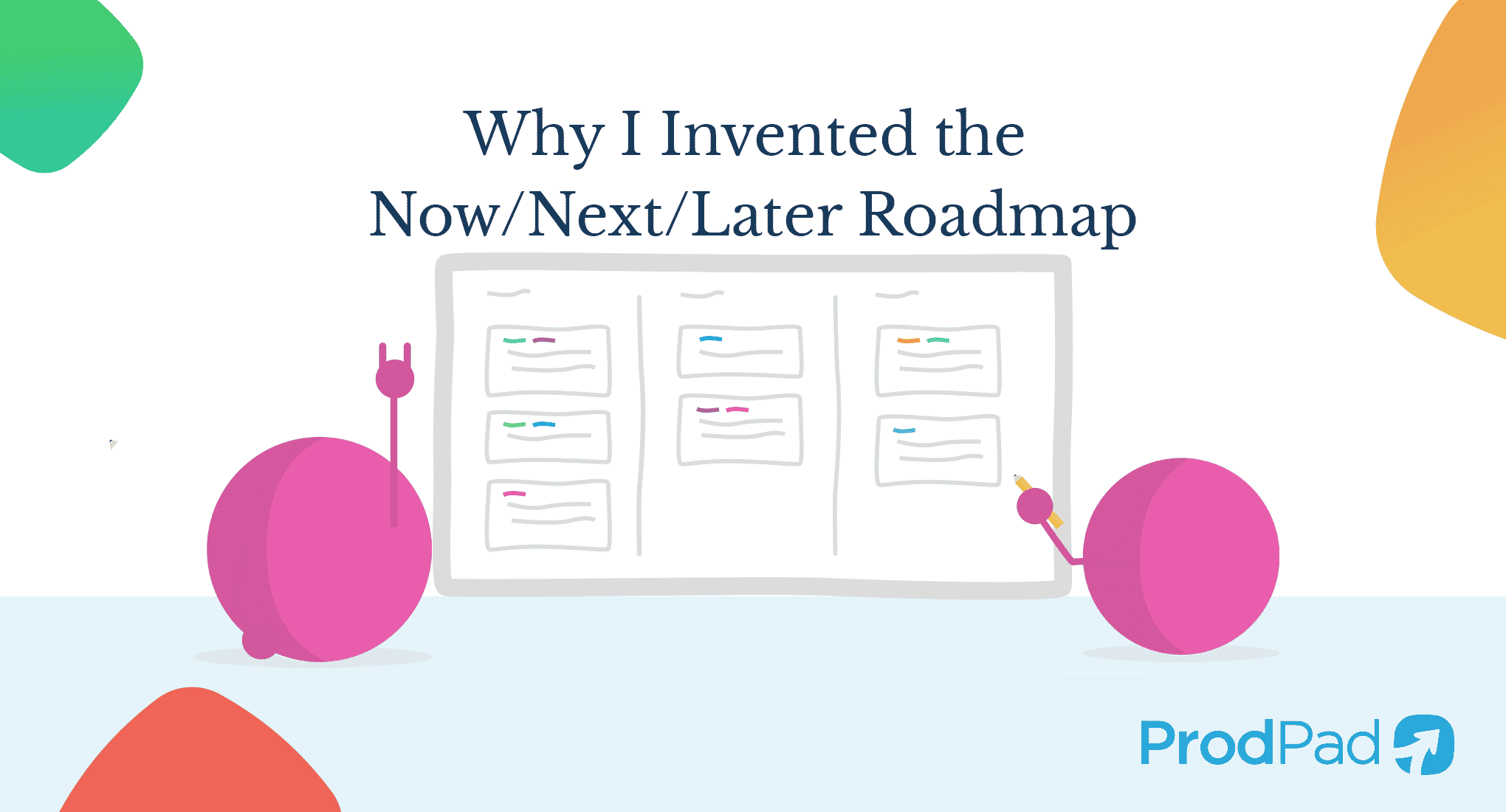Half the job of managing expectations within an "Agile delivery cycle" is the presentation of the plans!
The other half is actually executing it.
Successful product delivery highly depends on building trust and confidence with our stakeholders.
In the previous guide, we explored the purpose & types of commitments and how to get these out of an Agile delivery team.
What is a good roadmap?
A roadmap that visualizes the upcoming priorities for a delivery team acting as a guide for aligning stakeholders & teams while also showcasing to stakeholders and the customer what they can look forward to.
It shouldn't go down into the rabbit hole of details.
In this guide, we will explore the different ways to present these expectations to stakeholders.
Step 1 - Got a head/VP of Product? Then use them.
All too often, executives keep details up their sleeves and the teams run around without direction. Part of the problem is political infighting and bureaucracy in an organization.
The head of product needs to coach the business leaders on sharing the vision and details so that this can trickle down into the product vision and strategy and teams can benefit from this direction.
HOP/VOP needs to fight the battle that you as a product manager / individual contributor don't have the mandate, authority, circle of influence, and capacity to carry out.
Roadmaps can help drive the conversation behind this with the relevant stakeholders, partners, and boards.
Never be scared to ask your VP/Head of Product for help to drive a product vision for a roadmap. They may have access to circles of influence and authority that come into play to get funding and buy into priorities.
What can you do to help guide the VP of Product?
- Flag issues that have a low level of confidence - whether its monetization or the ability to deliver it
- Reduce the number of commitments with high unpredictability on delivery
- Bring high-value items to the table based on market research that you can conduct
- Always provide an options paper for any high-value or material things that have been handed down to get into a roadmap that you need to deprioritize
I wrote about how to say no as a product manager which goes into this in detail and is critical, check it out on Product Learn.

How do confidence levels come in?
In the last guide, I wrote about the 3 main types of commitments and they are based on predictability and confidence that a product manager must communicate to the management team and stakeholders.
Confidence levels are important to understand and communicate. They should be made explicit and not assumed. (ie: Spell it out that something will probably be 40% probable, it will help people decide if they want to invest in something or change and explore other options).
So how do they come into play?
They drive trust.
- Trust from stakeholders - customers, investors, and business users helps drive funding, revenue, and growth.
- Trust drives the acceptance of future roadmaps and engagement during the presentation of these roadmaps.
- Trust is built with items on a roadmap getting delivered when they were promised and also by confidently advising stakeholders of the issues with the delivery of certain items that can be deprioritized.
- Trust improves culture by reducing the command and control narrative of old-school management practices.
As this is the case, the number of commitments with low delivery confidence should be reduced.
This allows the team to be successful in delivery and become trustworthy.
Step 2 - Align on presentation method
Depending on the tools, methods, and tactics being used in an organization, - there will be different ways and views to represent these commitments.
A product manager must understand there is the commitment by confidence matrix and then there is the roadmap.
The simpler the roadmap and delivery dates expressed the easier it is to consume and explain to stakeholders.
I like to use the Value to Confidence matrix as it saves me a lot of time and debate, however, the majority of organizations require you to use a roadmap.
Similar to the value-to-effort matrix I shared earlier in the below article, the value-to-confidence matrix is a good way to get stakeholders aligned and make decisions fast.
You could use both.


Step 3 - Pick the roadmap method
There are 3 Common Roadmaps methods. While there are many ways to do roadmaps, the below 3 main ways of showing roadmaps are widely accepted.
1. Now-Next-Later
The Now-Next-Later roadmap is a useful tool in product management that divides work into three-time horizons, prioritizing urgent problems and aligning them with business objectives.
The NNL roadmap offers several benefits, including flexibility, adaptability to varying levels of certainty, time-saving, alignment with objectives, and facilitating more impactful product decisions.
Janna Bastow , cofounder of Mind the Product
Says, the Now-Next-Later roadmap exists because timeline roadmaps aren’t effective, simple as that.
Timeline roadmaps insist on deadlines, which means product teams are deprived of the flexibility that allows them to do their best work.
Read more about why to use this in Janna's article below.

This concept also goes back to 2012, a ThoughtWorks article on this summarizes that instead of analyzing and estimating all the stories in the backlog at once, the stories in the Now column are given high priority and thoroughly analyzed.
While those in the Next column are analyzed to a lesser degree. The stories in the Later column are not analyzed or estimated at all since they are considered uncertain and of lower priority.
2. Time-based - aka Timelines
Timeline-based roadmaps organize features & initiatives based on their delivery timeline. It highlights the evolution of the product over time and provides a sense of progress.
Listing the feature or initiative by delivery timeline. It helps senior leaders in an organization provide assurance on things that fit into the wider business goals and strategic goals.

3. Priority based
Listing the feature or initiative by priority of when it would be delivered.
I prefer this for moonshots and roofshots as it gives a team plenty of flex room due to the optics of committing without a date.

Other types of roadmaps
- Theme-Based Roadmaps:
These are roadmaps where we would organize features and initiatives around specific themes or goals helps stakeholders grasp the strategic focus of the product. - Swimlane Roadmaps:
Using swimlanes, product managers can visually represent different stakeholders, such as marketing, engineering, or design, and their respective contributions to the product's roadmap.
Roadmapping tools
- Airfocus
First of its kind, airfocus is a web-based modular product management tool designed to help teams and organizations make informed decisions about their products and strategies. Users can create and organize their backlog or list of items to be prioritized, such as features, user stories, tasks, or initiatives. The tool offers various prioritization methods, including the MoSCoW method, value-vs-effort matrix, and weighted scoring, to help users determine the relative importance and urgency of each item. - Aha!
One of the oldest and most popular product roadmap software that offers robust features for visualizing roadmaps, setting goals, tracking progress, and collaborating with teams. - Productboard
Known for its user-friendly interface, Productboard helps product managers capture, prioritize, and present feature requests, aligning them with product strategy and customer needs. - Roadmunk
A powerful tool for creating roadmaps with customizable views, Roadmunk offers features like data integration, collaboration, and scenario planning for effective roadmap presentations. - Jira
Originally designed as an issue-tracking system, Jira has evolved into a versatile platform for Agile project management, offering roadmap features that support planning, tracking, and reporting.
Ending note
Presenting roadmaps effectively is an essential skill for product managers to align stakeholders, communicate strategic vision, and facilitate decision-making.
By utilizing different presentation methods such as theme-based, time-based, swimlane, or agile roadmaps, product managers can cater to diverse audience needs.
If you’re finding this blog valuable, consider sharing it with friends, or subscribing if you haven’t already.





